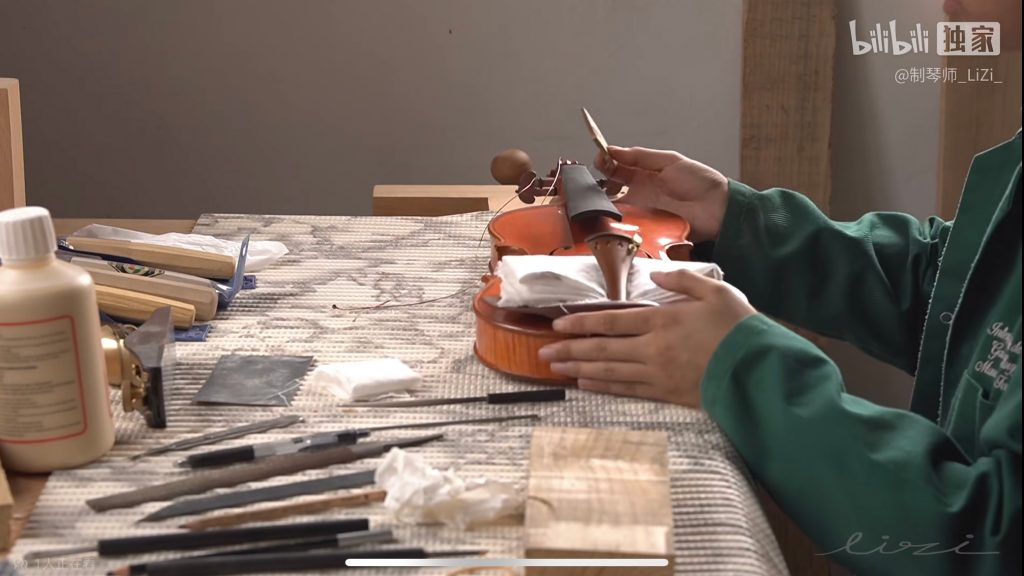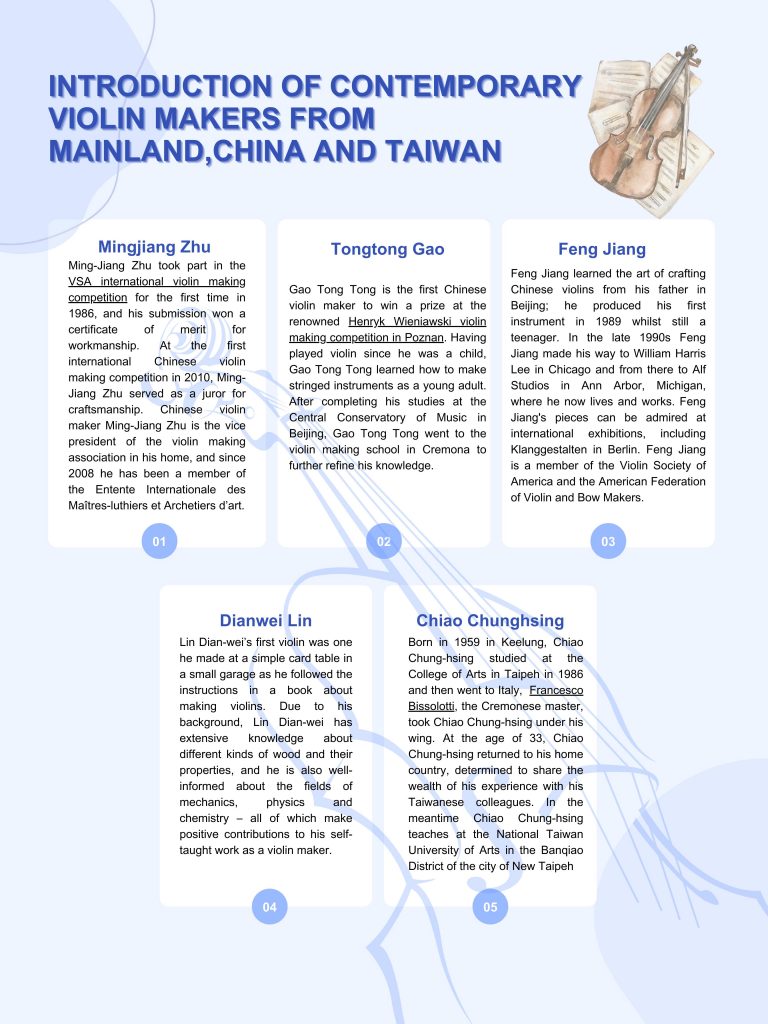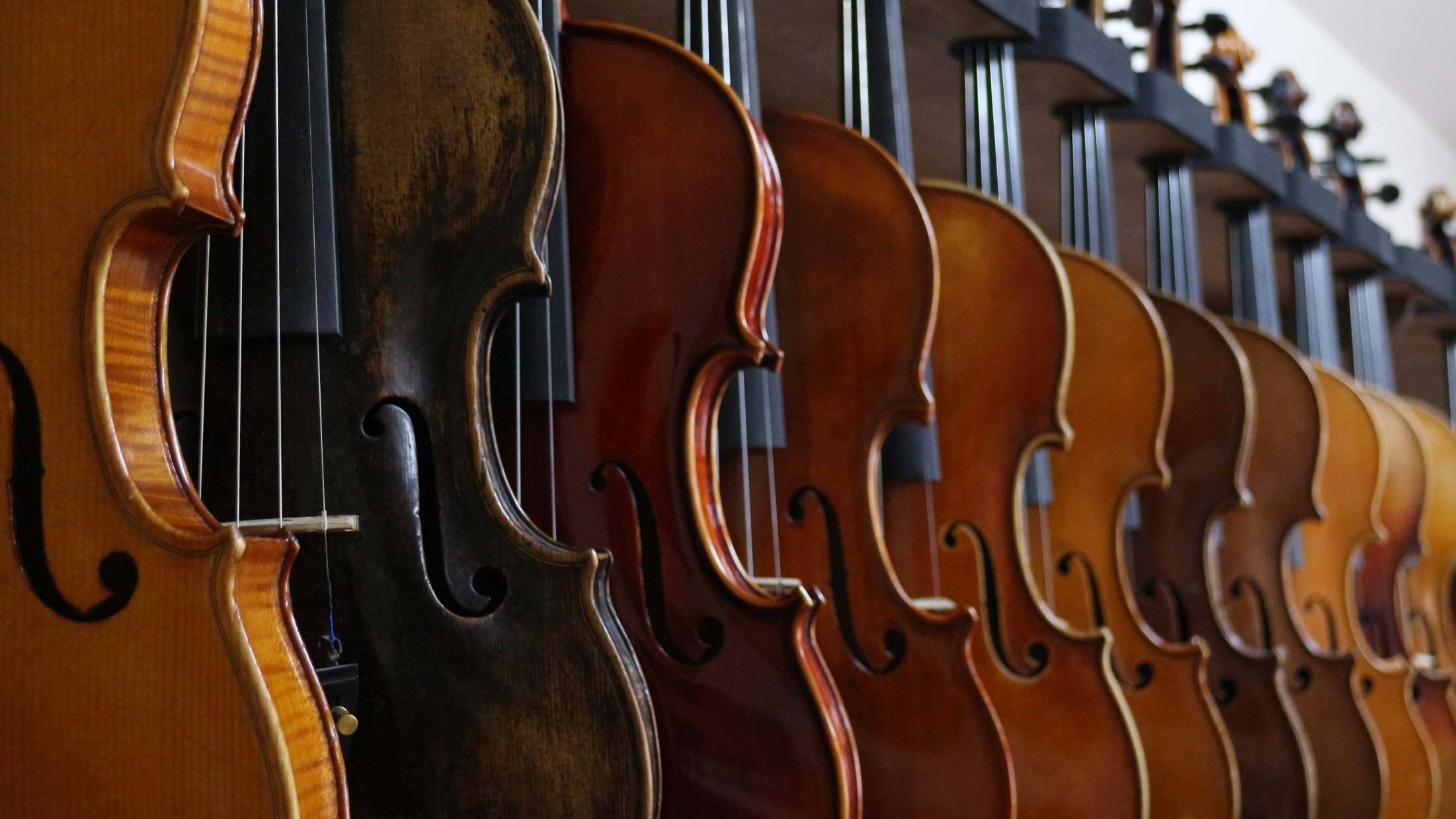Why, despite the evolution of China’s violin craftsmanship from a handcrafted skill to a fine art standard, does a disparity persist when compared to the international benchmarks in violin production?
Chinese violins are frequently featured in international competitions. They have won many prizes, but the share of high-quality violins made in China in the global market is minimal, with low-end industrial violins still dominating.
Experts in the industry have also pointed out that, as a handcrafted art that has been raised to the skill level, there is still a gap between Chinese art violin making and its foreign counterparts.
The conductor Seiji Ozawa once lamented that China has many great players, but they use the lowest-quality instruments. Classical music is not popular in China, and many people cannot distinguish between a cello and a viola, let alone the profession of the luthier.

Luthier, an unfamiliar and unpopular career to a traditional family.
Lizi, a young luthier from Yunnan, China, who had recently graduated from a Belgian luthier school, decided to return to China after six years of study to start her studio.
“I was constantly nagged by my parents when I returned to China. They thought I was making nonsense and didn’t have a decent job,” Lizi said, “none of my relatives worked in the music industry.”
She missed the days when she was still studying abroad, Lizi described the town where she studied. There were only about 2,000 people, and she can saw cows and sheep every day when she opened the door, “I was the first and only Asian student in the school, the Belgian countryside is tranquil, and I think I’ve become more peaceful than before, but now that I’m back home, the environment has changed, and I feel like my mind has changed as well.”
Classical music education in China has been lacking in terms of accessibility. In many primary and secondary schools, music lessons are generally relegated to the back of various cultural subjects. It is often taken up by cultural issues such as languages, mathematics and foreign studies, resulting in a severe squeeze on music class time. Lizi says: “In China, many families believe that studying music, dance and painting at university is the equivalent of not being able to go on to study other social studies and sciences.”
“My parents were pushing me to find a job. They used to say that I should go for the government agent. What are you studying abroad for? It’s annoying,” Lizi said that this anxious environment has affected her, with most of the elders expecting her to have a stable job rather than doing something she loves, “I don’t think I can stand working for government, it seems like I’m doing the same thing every day, and there’s nothing new to get in touch with to learn either, I can’t bear to live like this.”
Her parents’ opposition did not stop her from pursuing a violin-making career. After four years of study in Belgium, Lizi now has her studio in her home country and has officially started running her social media account. While studying abroad, she made vlog videos while looking and now has over 50,000 followers on the video site.
“I felt like it was a very new industry for China and not so popular, so I thought it would be hard to find a job. But I thought violin making was exciting, so I made a video, and many people saw it. Now it’s become part of my career, so I think that’s great,” Lizi said.
So far, her videos have helped her gain some clients while popularising the profession of a luthier. “People will come to me on the video to fix their instruments, which might let me have a place in the industry.”

High-quality violins and low-end violins have a strong polarisation.
Thirty years ago, Chinese violins were always have been criticised as “lame instruments” in the international market. Thirty years later, there are now more than a hundred violin-making companies in China.
Some statistics show that Chinese industrial violins now account for two-thirds of the world market, making them the first choice for novice violinists worldwide.
Looking back at the development of the Chinese violin in the last two years, the scale of Chinese violin production has increased, and the overall standard has improved. However, the number of educated professional luthiers is still very small.
There are three main types of violin production: industrial violin production, violin workshops and professional violin makers. Industrial violin production aims to make instruments for the mass market, hence the popular violin or learning instrument.
Violins are produced in a production chain in which different parts of the violin are produced in various production processes and assembled into a violin. A group makes the works of the fiddle workshop of ten or twenty people under the direction of a master craftsman. The main reason for making violins this way was to meet the social demand for more violins and make them cheaper.
The violins made by professional luthiers are the personal work of makers who have developed a certain reputation and brand name over a long period in making violins. A maker can make as few as five or six violins a year, or as many as ten, which is an entirely independent production. The maker makes the violin according to the wood’s characteristics and the player’s requirements, so the work has a strong personality.
In China, the low cost of industrial production of violins has also been the focus of international controversy over the past two years.
According to a report from the Los Angeles Times, “For nearly a decade, Chinese violins have changed the world’s production of stringed instruments”. The change has been made possible by cheap labour and the rapid improvement in production technology.
Chinese violins were sold for only 50 or 60 pounds, rapidly expanding their share of the international market with their ‘low price’ model. As a result, the price of ordinary violins fell, and there were even advertisements like ‘a violin for one dollar’. At the same time, the share of the market for high-end violins made in China remained negligible.
In 2008, a day was devoted to a “China Forum” during the American Violin Competition to discuss the low prices of industrially produced violins in China.
The standard of being a Chinese professional luthier is very high
Violin making is a demanding profession, requiring not only dexterous hands but also music sense and a great deal of knowledge of physics, acoustics, materials, and other natural sciences.
According to some professionals, the excellence of the handcrafted instrument is the ability of the luthier to tailor the wood to its character. In addition, a good luthier can create a highly individual violin to the player’s requirements and playing habits.
“The art of violin making has taken the violin beyond the concept of a musical instrument and elevated it to an art form, like sculpture, calligraphy or painting, and only an artist can make an art violin. Therefore, the maker of an artistic violin is not a craftsman but an artist. Training artistic violin makers takes a long time, usually ten years before they reach the threshold,” said Quan Zheng.

Almost all the strongest violin-making countries have professional schools for training luthiers. Italy has the world’s most famous international luthier school – the Cremona School of Violin Making. The school has a significant influence on the world of violin making. It is the alma mater of many famous European and American luthiers.
In Germany, the National Violin School in Mittenwald is the equivalent of a secondary school with a strict age limit of 19 years. In France, there is the École de la violoncelle de Mircourt, the birthplace of the French school.
In China, about five or six music schools currently offer violin-making courses. The earliest institution in China to establish an undergraduate degree in violin making was the Shanghai Conservatory of Music. Professor Quan Zheng teaches at the Central Conservatory of Music’s Violin Making Centre.
“Like other music majors, violin-making students must study performance and chamber music, as well as related courses in the conservatory. It should be noted that schools abroad focus more on the traditional techniques of violin making and some theoretical courses that prepare professional makers. Our profession is based on the level of university teaching and is more focused on research and design. For this reason, our violin-making courses have some scientific aspects such as musical acoustics, wood science and mechanical drawing”.
At the recent 2nd China (Beijing) International Violin and Bow Making Competition, in addition to tone, volume, balance and sensitivity, the craftsmanship and artistic quality of the violin became the main focus of the competition, accounting for the most significant proportion of the total score.
“Because it reflects the maker’s research and artistic cultivation of the culture of the instrument.” Quan Zheng believes that Chinese students have a higher level of musicianship than their foreign counterparts in violin making.
“Chinese students generally have the level of performance of those attached to a conservatory; those who come up from public high school also play at a high level. However, where Chinese violin makers fall short is that there is still a gap between their understanding of the culture of the instrument and their aesthetic and artistic cultivation with Europe and the US.”
“Violin making abroad is inseparable from music, architecture, sculpture and art, all of which are part of Western culture and art. Due to the different cultural climates, our students have relatively limited exposure to other Western art disciplines. Artistic makers have a term for ‘eating’ the violin, and this ‘eating’ is not a chewing and digesting activity in the traditional sense, but rather an awareness and appreciation.”
“Just as a calligrapher must first dabble in and imitate a wide range of styles before he can establish himself as a calligrapher, an artistic violinist must also have a wide knowledge of the history of the violin and the styles of the genre. Only when one has seen many good instruments, and understood the history of the violin and the styles of the various schools can one know what makes an instrument so good. However, there are not many good instruments to see in China.” Quan Zheng analyses.
Quan Zheng is also one of the luthiers who brought the art of foreign violin-making back to China. He recalls this little incident when talking about the popularity of art violin making.
A few years ago, when he went to apply for an Italian visa, the gatekeeper at the Italian Embassy asked him curiously about his profession. When he said he was a violin maker, the doorman showed his admiration and said, “The Stradivarius of China!” In Italy, even people who are not involved in music have some knowledge of the art of violin making, which shows how popular the art of violin making is in the West.
In recent years, the collection of art violins in China has become increasingly popular, and prices have been speculated to be extremely high. However, the public’s understanding of violin culture is still relatively superficial. News of collectors buying counterfeit Italian guitars has also been frequently reported online.
Quan Zheng believes that for China’s artistic violin-making to truly catch up with that of Europe and the United States, much work needs to be done to popularise the art of violin-making. A community of people who understand the art of violin making must gradually be formed, including players, luthiers, collectors, dealers and amateurs.
“This will take time and a lot of work. When the group of people who know how to play the violin has a considerable level and scale, the Chinese violin-making business will be able to improve. When the cultural standard of the whole society is raised, the violin-making culture will also be popularised accordingly.”

